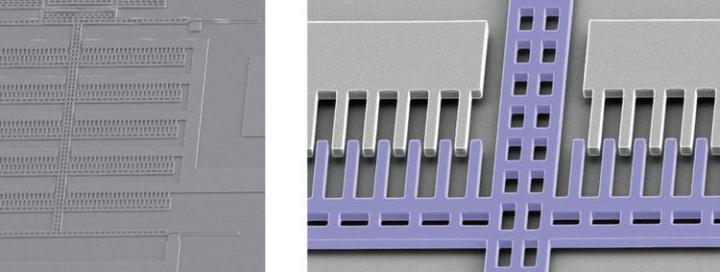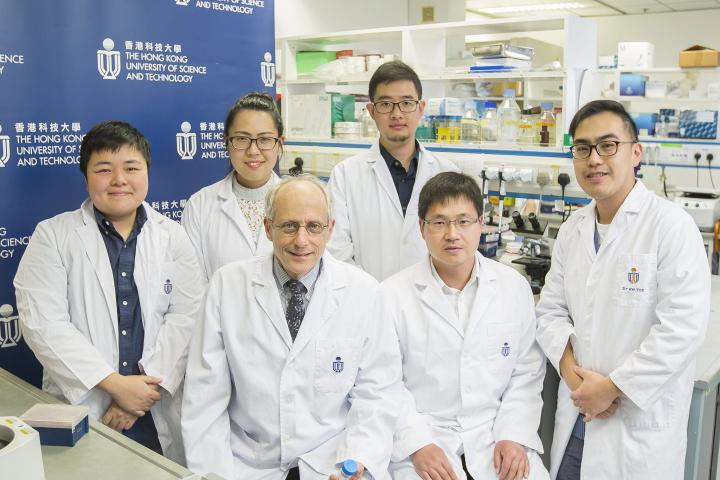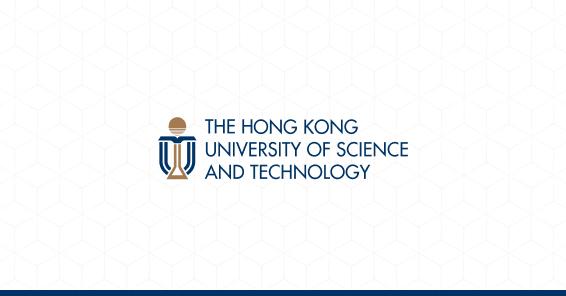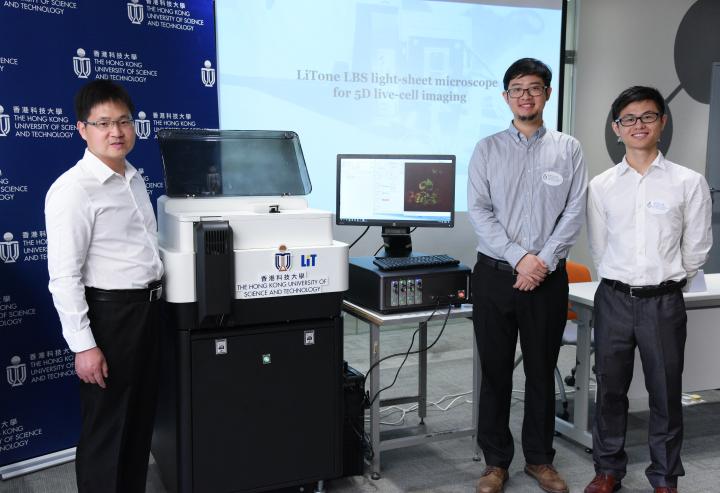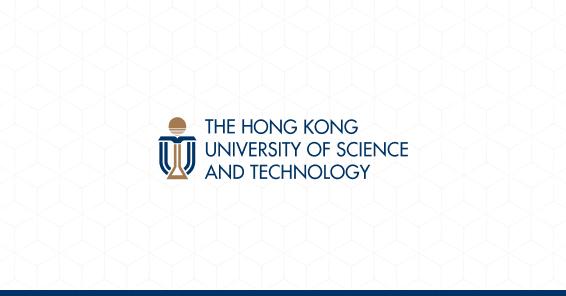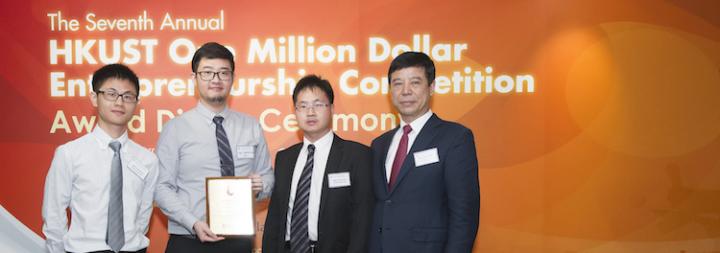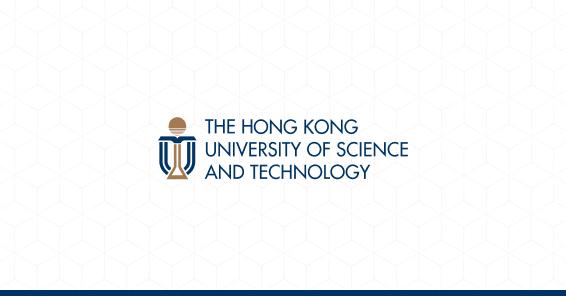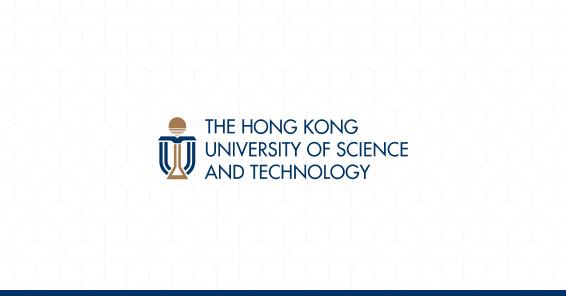News & Events
2018-02-06
A research team led by Prof. Ho Bun Chan, Associate Professor of the Department of Physics at the Hong Kong University of Science and Technology (HKUST), demonstrates experimentally for the first time that the Casimir force can be made to depend non-monotonically on displacement between silicon nanostructures. This finding was published in Nature Photonics in February 2017.
In 1948, Dutch physicist Hendrik Casimir predicted that two electrically neutral, conducting planes attract each other due to the boundary conditions imposed on the quantum fluctuations of the electromagnetic field. This quantum attraction, commonly referred to as the Casimir force, increases rapidly as the distance between the planes decreases. It becomes the dominant interaction between neutral components at the nanoscale. In the last two decades, a series of experiments have verified the existence of this tiny force. The vast majority of the experiments, however, involved simple geometries such as a sphere positioned close to a plate. In these configurations, the attractive Casimir force increases monotonically as the separation is decreased. Recently there have been much efforts in controlling the sign of the Casimir force. In particular, the ability to generate repulsive Casimir forces would open new opportunities in preventing the malfunction of nanomechanical devices due to stiction, which refers to the adhesion of mechanical components upon contact.
Using nanofabrication techniques, Prof. Ho Bun Chan’s research group constructed two silicon components with nanoscale protrusions and measure the Casimir force between them at cryogenic temperatures. As the separation between the components are changed with an on-chip actuator, the slope of the Casimir force is found to reverse sign. In addition, they observed a “Casimir spring” effect, where quantum fluctuations lead to confinement of nanomechanical motion. The findings are in good agreement with calculations from the collaborating theory teams of Prof. C. T. Chan of HKUST and Prof. A. W. Rodriguez of Princeton University. HKUST PG students involved in this work include Lu Tang, Mingkang Wang and Henry Ng. This experiment serves as a first step in exploiting the Casimir force between components of complex geometry in nanomechanical systems.
For more information, please check: https://www.nature.com/articles/nphoton.2016.254
Read more
2017-10-05
Following the announcement of the Nobel Prize in Physics 2017, we are pleased to announce that the 2017 Paul and May Chu Undergraduate Research Award will be awarded to Pok Man TAM, and the Honorable Mentions will be awarded to I-Hsuan KAO and Aditya Varna IYER. The Paul and May Chu UG Research Award is the highest honor offered by the Department of Physics to recognize outstanding research in physics by an undergraduate student.
Pok Man TAM has worked on both experimental and theoretical condensed matter physics. In his experimental research that he carried out under the supervision of Prof. Rolf LORTZ at HKUST, he studied the iron-based superconductors BaKFeAs and coauthored two papers [Physical Review B 93, 104516 (2016); Physica C 539, 30 (2017)]. At MIT, he predicted the massive and tilted Dirac Landau levels on the surface of topological crystalline insulators under the supervision of Prof. Inti SODEMANN of the Max Planck Institute and Prof. Liang FU.
I-Hsuan KAO has worked on iron based superconductors since spring 2017, under the supervision of Prof. Rolf LORTZ. In this project he developed a new method to study the nodeless superconductivity in underdoped Iron-based superconductors FeSe1-xSx by measuring the temperature dependence of the lower critical field. He coauthored one paper [Physica C 539, 30 (2017)] and he is currently preparing another as first author.
Aditya Varna IYER had worked on cosmology and astrophysics from May to June 2017, under the supervision of Prof. Robert BRANDENBERGER at McGill University. In this project, he found the possibility that Fast Radio Bursts occur due to the annihilation of cusps on cosmic string loops. The results are summarized in a preprint on arXiv:1707.02397.
For the details of the award, please check the HKUST Physics UG Scholarship website.
Congratulations to Pok Man TAM, I-Hsuan KAO, and Aditya Varna IYER!
Sincerely yours,
Prof. Michael Altman
Head, Department of Physics
The Hong Kong University of Science and Technology
Prof. Shengwang Du
Chair, UG Scholarship Task Group
Department of Physics
Read more
2017-08-31
Dear all,
The Paul and May Chu Undergraduate Research Award 2017 is now opening for applications from physics undergraduate students. The Paul and May Chu Undergraduate Research Award, given annually to reward physics undergraduate students with excellence in research, is the highest honor for undergraduate research at Department of Physics, HKUST.
For the award and application details, as well as the selection regulations, please check the department scholarship website: http://physics.ust.hk/scholarship/scholarships/PMCURA/pmcura.html
The 2017 application deadline is 15 September 2017. The final result will be announced in early October (in the same week as the Nobel Prize in Physics 2017 will be announced).
Inquiries can be made to the Physics Department Scholarship Task Group (Email: phaward@ust.hk ).
Sincerely yours,
Prof. Shengwang Du
Chair, UG Scholarship Task Group
Department of Physics
HKUST
Email: phaward@ust.hk
http://physics.ust.hk/scholarship/index.html Read more
Department of Physics
HKUST
Email: phaward@ust.hk
http://physics.ust.hk/scholarship/index.html Read more
2017-06-12
Prof Shengwang Du and his startup company Light Innovation Technology (LiT, physics graduates: Dr Teng Zhao and Dr Luwei Zhao) Ltd received the Innovation Award and GF Securities Award in the HKUST One Millions Dollar Entrepreneurship Competition, 2017, for their LBS light-sheet microscopy and 5D live-cell imaging.
For more information.
Read more
2016-12-01
Prof Michael Wong was awarded 2016 School of Science Service Award.
Read more
2016-12-01
Prof Tao Liu was awarded 2016 School of Science Research Award.
Read more

